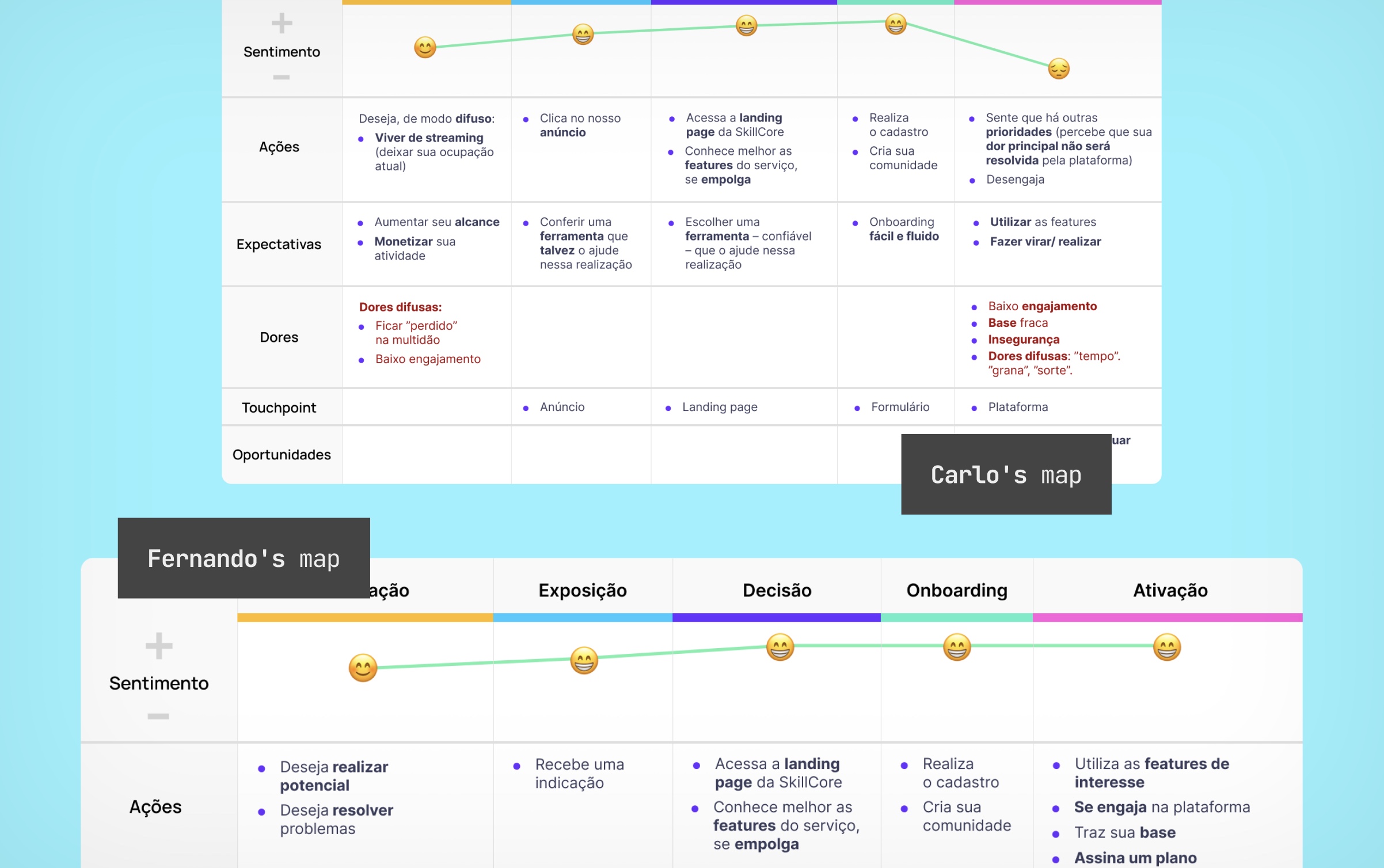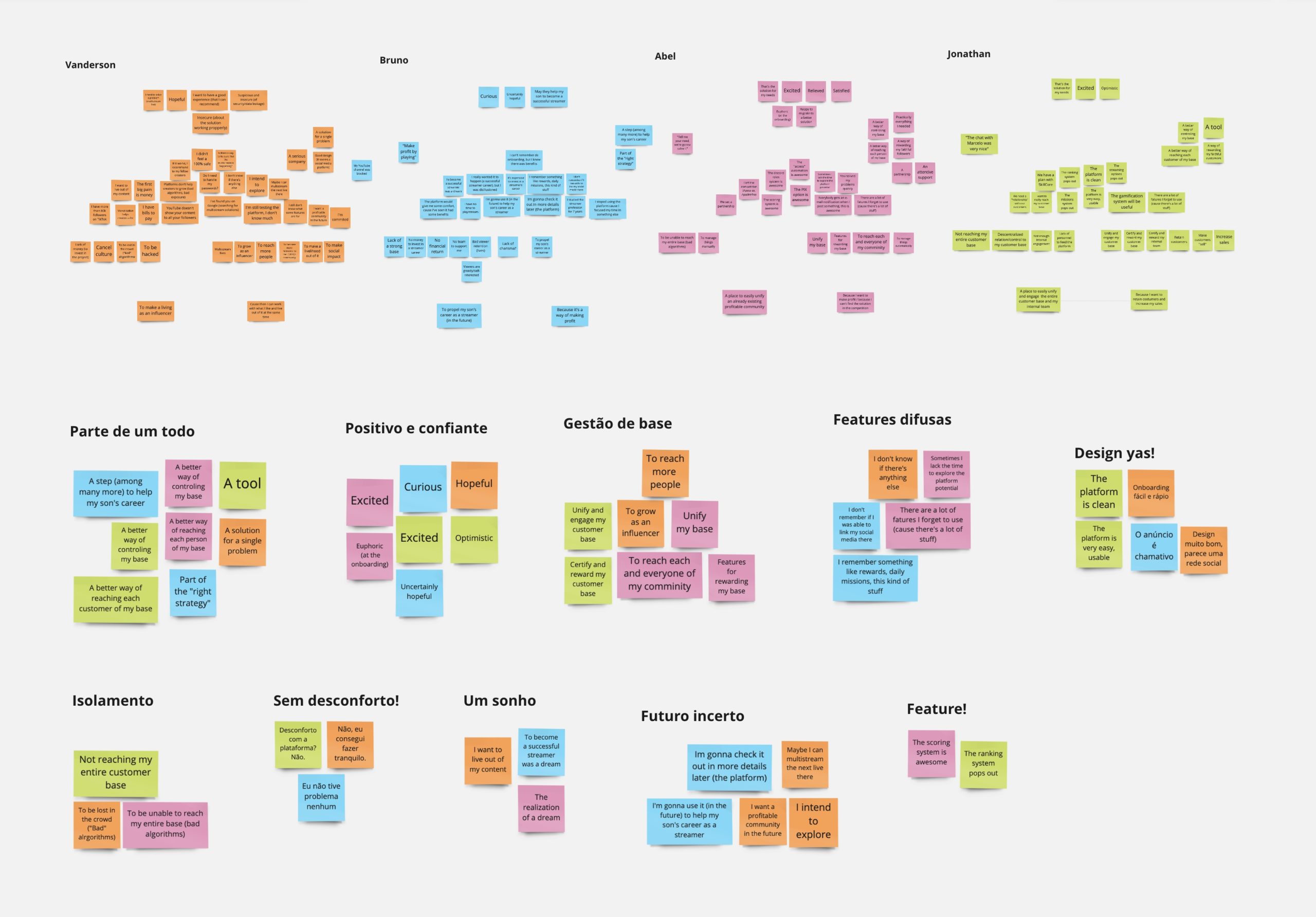Communa
User Discovery v1.0

OVERVIEW
The first in-depth User Discovery for Communa*, a community management startup. The company was having a hard time trying to understand its product pain points and the actual reasons behind the disengagement by admin users.
* In respect to the actual startup, I’ve replaced the real name and the sensitive data for fictitious ones.
role & duration
UX Researcher
May ⇾ June 2022 (1 month)
1. The Problem
too many guesses, too little evidences
• The admin users are the responsible for bringing regular users to the platform, but they were disengaging too soon, not activating their “spaces”
• The CEOs were assuming a variety of reasons, but there was no research and validation culture going on
• The company has never interviewed its users with the purpose of exploratory or validative insights
2. Planning
an exploratory research will be born
I set up a Research Plan establishing contexts, objectives, methodologies, limitations and schedule
1. Objective
Obtain insights about the main pains and barriers experienced by the admin user in general
2. Methodology
Since the admin user was never listened to and the analytics data was too thin and not segmented (it was a very recent startup), I decided for a qualitative approach:
• Exploratory approach
• Qualitative interviews with admin users
3. As unbiased as i can
I came up with more open and more neutral propositive questions in order to avoid biases the most. Questions such as:
• Would you describe me your feelings while […] ?
• Why did you consider subscribing to […] ?
• What your activities there represent to your work as a […] ?
4. Research plan
I set up a simple Interview Guide to help me sticking to the focus and to the neutrality needed.
5. Schedule and recruiting
I set up a schedule for the entire process. I could also come up with a list of potential admin users that I started to recruit right away.
3. Interviewing
Listening to the users
• I could interview 4 admin users
• The 4 admin users were recruited based on a minimum amplitude of contexts of product use
• The interviews were, in average, 20 minutes long
• All interviews were recorded
4. Synthesizing and consolidating information
Let’s find patterns and correlate data
first, transcriptions
After the interviews, I’ve organized video and audio files and transcripted all the information to text format.
Empathy maps

The empathy maps have helped me decomposing and finding patterns on the interviews transcriptions while facilitating my understanding of the user’s perspectives.
Personas
The empathy maps have led me to the personas methodology, which helped me formalizing the information, patterns and points of view previously captured.
persona 1 • the wannabe streamer (main traits)
• “living out of gaming was a dream“/”I’ll take a look at it later“
• 22 years, adm worker
• wants to make impact on the gaming community
• but feels he doesn’t have the money and the support necessary
persona 2 • the propositive entrepreneur (main traits)
• “i need more control over my base“/”i hope your product help me“
• 31 years, entrepreneur
• wants to control his influence base better so he can monetize on it
• fears not finding the right tool and not having enough people on his team

User Journey maps

The User Journey Maps helped me assigning a chronological dimension to the picture. I could empathize even more by reading the user’s expectations and reactions to specific phases and touch points.
clusters
I also clustered the interview information – in the original form expressed by the user – into category groups with the help of the team. Both the incidence and the context were taken in consideration.

5. Results: The Big Split
A meaningful opposition

The main insight made possible by the research was the strong antagonism between the two identified personas. That big differecent – that revelaed two main sets of pains and barriers – was certainly significative to the perceived disengagement.

CARLOS
Characteristics
• Unsure
• Insecure
• Begginer
• Passive
• Wandering
• Diffuse
Behavior
• Comes unintentionally (to the product)
• Feel excited about a dream
• Feel imprecise pains
• Disengages easily
• Feels frustrated easily
Pains (relating to the product)
Carlos’ pains are not directly related to the product, but to his self-perception. He doesn’t consider himself as someone (a streamer, a creator) robust enough to have an activatable/profitable base or community around him.

FERNANDO
Characteristics
• Decided
• Secure
• Robust
• Propositive
• Pragmatic
• Critic
Behavior
• Comes with a clear intention (to the product)
• Feel excited about his plans
• Feel objective pains
• Engages with the product
• Realizes tasks and plans
Pains (relating to the product)
• fears not having enough personel
• fears the product won’t match his expectations
6. Results: Strong Incidencies
Somethings were risen multiple times
Some sets of dynamics, expectations and/or concerns were identified more than one time, meaning they deserve further exploration:
• Features who? users expressed an imprecise perception about the available features
• Just a tool: users talked about Communa as a tool among others in order to accomplish their goal
• Perhaps tomorrow: users frequently talked about the platform in future and imprecise tenses.
• UI Rocks! Users frequently complimented the interface appearance.
7. Results: Unfolding Questions
What communa should pay attention to
1. Is there any place for this guy?

Is there a possibility for this profile in the platform? Perhaps it’s revealing of ICP (Ideal Customer Profile) dissonances, or maybe there’s an inability to strategize for him.
2. ICP problem?
What’s the Communa ICP? How to find or to talk to these poeple?
3. Is communa positioning itself the best way?
How and where is Communa communicating about its value proposition?
4. what about ambassadors?
The success persona shows that recommendation can be key.
5. Too many features? or lack of tailoring?
Is is possible that the product team is spending too much time into pointless features? Is is possible that the user experience is too generic while it could be more tailored?
6. Automation for high demand
How to best define and validate automation solutions?
8. Posterity
A Research Culture for the Future
Researches bring a product closer to its user
And remind the teams that this little person is the gravitational center of the whole process.
Let’s keep and active and continuous hearing
Interviewing and interacting with the user – for exploratory or validative reasons – should be an organic and everlasting activity.
